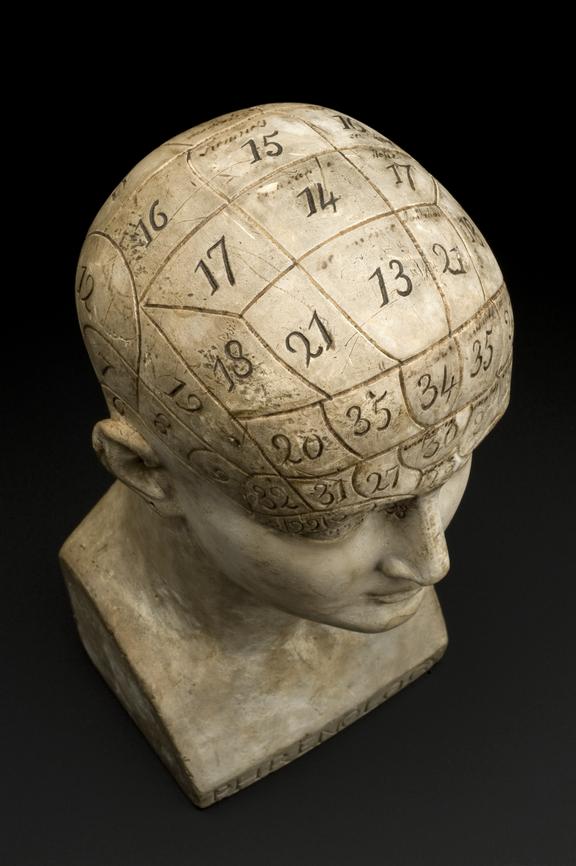
Phrenological head
- maker:
- James DeVille




Earthenware phrenological bust, areas are marked off with an impressed line, by J. De Ville, London, 1821. When this bust was ordered it probably came with De Ville's Manual of Phrenology (1826).
The plaster cast head shows the areas responsible for certain characteristics and personality traits according to the theories of Johann Gaspar Spurzheim (1776-1832). Phrenologists believed that the shape and size of various areas of the brain (and therefore the overlying skull) determined personality. In the 1800s, phrenology became popular with large numbers of people but soon became controversial within medical circles.
The head was made by James Deville (1777-1846), a plaster cast maker turned phrenologist. Deville opened his first shop in Soho, London in 1803 and began making casts from 1821 onwards. He had a collection of over five thousand different casts at his premises. Deville became one of the founders of the London Phrenological Society in 1823.
Details
- Category:
- Psychology, Psychiatry & Anthropometry
- Collection:
- Sir Henry Wellcome's Museum Collection
- Object Number:
- A152032
- Materials:
- earthenware
- Measurements:
-
overall: 245 mm x 115 mm x 105 mm, .3kg
- type:
- phrenological head
- credit:
- Glendining




